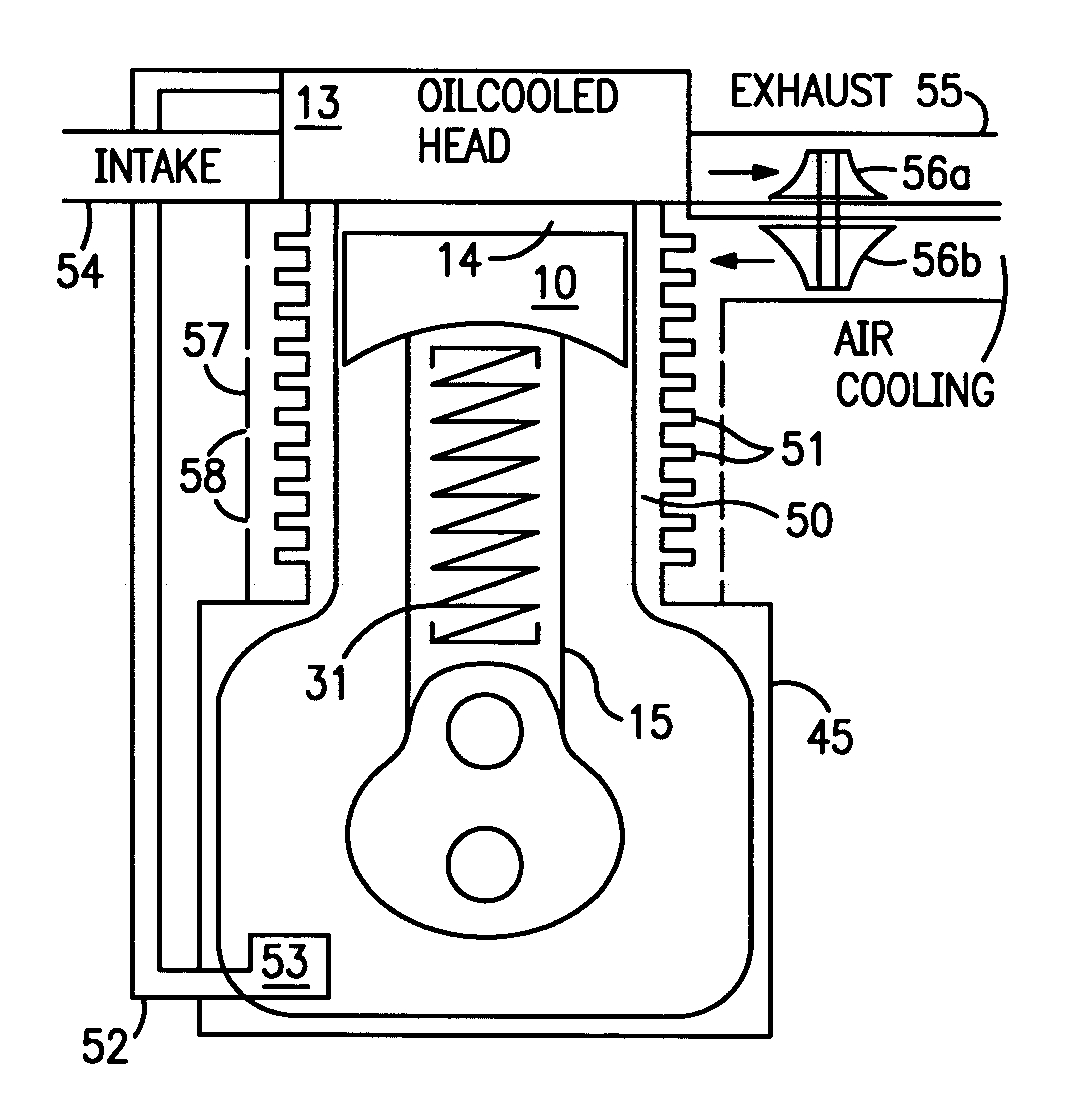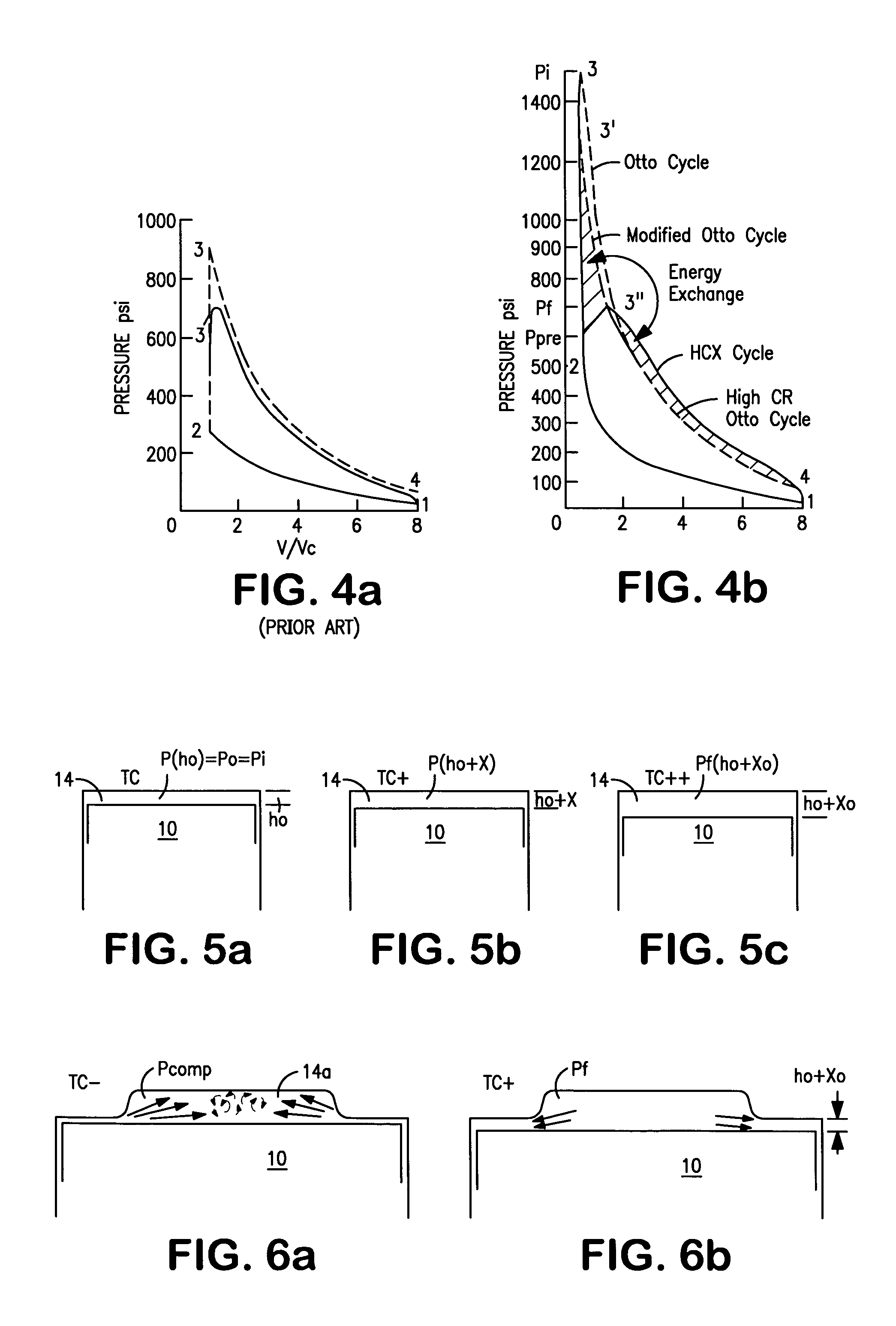High efficiency high power internal combustion engine operating in a high compression conversion exchange cycle
a high-efficiency, internal combustion engine technology, applied in the direction of engine controllers, connecting rods, shafts and bearings, etc., can solve the problems of high compression ratio, high efficiency, high compression ratio, etc., and achieve high efficiency, low emissions, and high power
- Summary
- Abstract
- Description
- Claims
- Application Information
AI Technical Summary
Benefits of technology
Problems solved by technology
Method used
Image
Examples
Embodiment Construction
[0039]FIGS. 1a to 1d represent, in partial schematic side-view form, piston locations at four different crank angle positions, at TC, at 45° after TC, at 90° after TC, and at 180° after TC. In the drawings, the piston 10 is connected via connecting rod 11 to the crank radius element 12, which work to move the piston through compression, combustion and expansion, and exhaust from the combustion chamber 14 defined between the cylinder head 13 and the piston 10. The engine can be a 2-stroke or 4-stroke engine, a spark ignition or diesel engine, but preferably, and for the purposes of this disclosure, is assumed to be a 4-stroke spark ignition homogeneous charge engine, which more ideally and advantageously can be minimally cooled using air-cooling as a result of the lower heat available from this higher engine efficiency, which preferably operates as a lean burn engine at light loads where most of the driving is done.
[0040]FIG. 1a represents one of the fundamental problems of the Otto...
PUM
 Login to View More
Login to View More Abstract
Description
Claims
Application Information
 Login to View More
Login to View More - R&D
- Intellectual Property
- Life Sciences
- Materials
- Tech Scout
- Unparalleled Data Quality
- Higher Quality Content
- 60% Fewer Hallucinations
Browse by: Latest US Patents, China's latest patents, Technical Efficacy Thesaurus, Application Domain, Technology Topic, Popular Technical Reports.
© 2025 PatSnap. All rights reserved.Legal|Privacy policy|Modern Slavery Act Transparency Statement|Sitemap|About US| Contact US: help@patsnap.com



